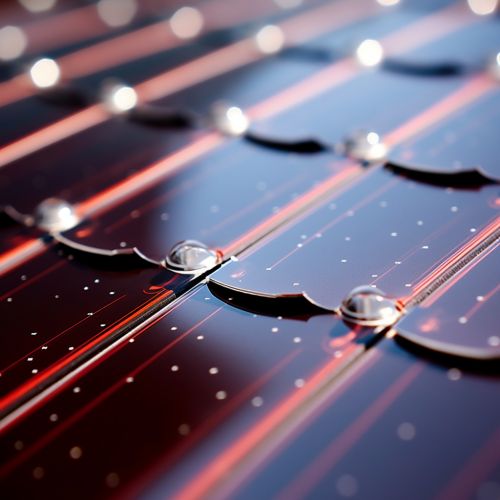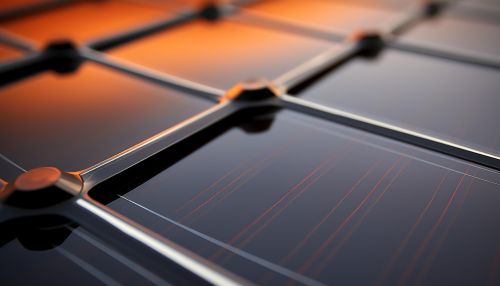Solar panel
Introduction
A solar panel is a device designed to absorb the sun's rays as a source of energy for generating electricity or heating. Solar panels are an integral part of solar power systems and are becoming increasingly important in our transition towards clean, renewable energy sources.
History
The development of solar panels began with the discovery of the photovoltaic effect by French physicist Edmond Becquerel in 1839. However, it wasn't until 1954 that the first practical solar cell was developed by Bell Laboratories. The efficiency of these early solar cells was low, but they set the stage for the development of more efficient and cost-effective solar panels in the decades to come.
Design and Construction
Solar panels are made up of solar cells, which are typically made from silicon. A solar cell consists of two layers of silicon: an n-type layer, which has extra electrons, and a p-type layer, which has extra holes. When sunlight hits the solar cell, it excites the electrons, causing them to move from the n-type layer to the p-type layer. This movement of electrons creates an electric current, which can be harnessed to power electrical devices.


Types of Solar Panels
There are three main types of solar panels: monocrystalline, polycrystalline, and thin-film.
- Monocrystalline solar panels are made from a single crystal structure. They are the most efficient type of solar panel, but they are also the most expensive.
- Polycrystalline solar panels are made from multiple crystal structures. They are less efficient than monocrystalline solar panels, but they are also less expensive.
- Thin-film solar panels are made by depositing one or more thin layers of photovoltaic material onto a substrate. They are the least efficient type of solar panel, but they are also the least expensive.
Efficiency
The efficiency of a solar panel refers to its ability to convert sunlight into usable electricity. The efficiency of a solar panel is determined by the quality of the solar cells and the technology used to manufacture them. The most efficient solar panels on the market today have efficiencies of over 20%.
Applications
Solar panels have a wide range of applications, from small-scale installations on homes and businesses to large-scale solar farms that generate electricity for the power grid. They are also used in remote locations where it is not feasible to connect to the power grid, and in space, where they power satellites and other spacecraft.
Environmental Impact
Solar panels have a positive environmental impact as they generate electricity without emitting greenhouse gases. However, the production of solar panels does involve some environmental impacts, including the use of raw materials and energy. These impacts can be mitigated through responsible manufacturing practices and recycling programs.
Future Developments
The future of solar panels looks promising, with ongoing research and development aimed at increasing their efficiency and reducing their cost. Some of the most exciting developments include the use of new materials, such as perovskites, and the development of solar cells that can capture more of the solar spectrum.
